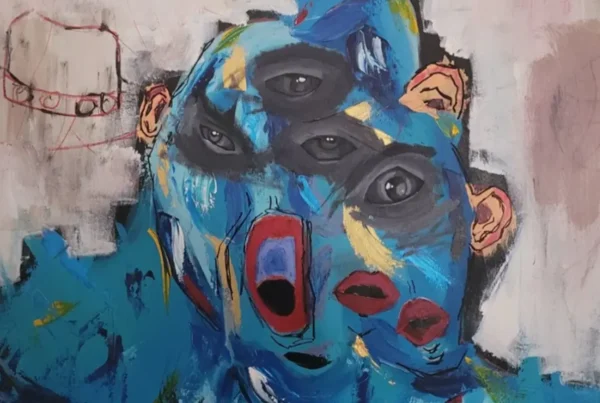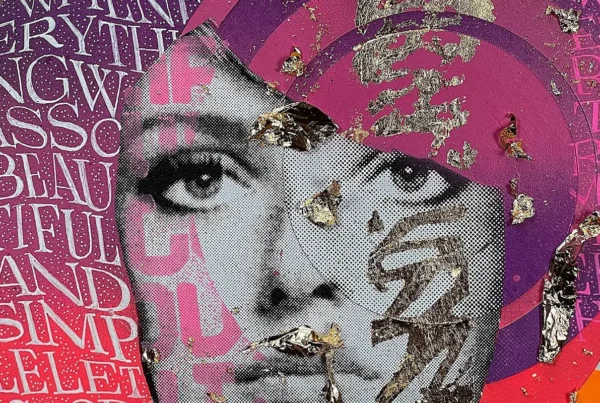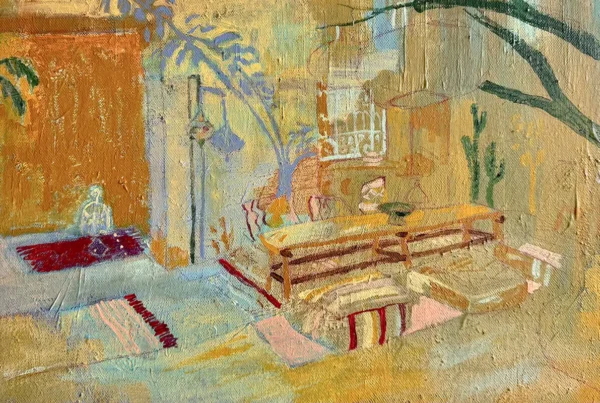“The basis of most of the images is the Internet – making what was digitized analogue again.”
A Vivid Collision of Color and Culture
Carsten Breuer’s work is an electrifying exploration of modern and pop art, where bold colors and audacious themes collide to create visually striking compositions. His artistic approach is deeply rooted in the digital era, yet it seeks to bridge the gap between the virtual and the tangible. By transforming digitized imagery back into physical artworks, he crafts pieces that pulse with contemporary energy while maintaining a tactile, human touch. His art thrives on a rebellious and youthful spirit, delivering cheeky, thought-provoking statements that challenge conventional perspectives.
Breuer’s journey into the art world was anything but conventional. Creativity has always been second nature to him. As a student, he was already being compensated for his paintings—classmates would commission him to complete their art assignments, recognizing his skill and talent. Despite spending years entrenched in the advertising industry, his passion for painting remained a constant force. It wasn’t until 2017 that he fully broke free from the constraints of commercial work to pursue his own artistic vision. This transition allowed him to embrace a more unfiltered, expressive style that reflects both his personal experiences and his sharp observations of contemporary culture.
His vibrant, high-impact aesthetic is instantly recognizable. Electric pinks, fiery oranges, and neon yellows dominate his palette, creating a sense of visual urgency. This explosion of color is counterbalanced by the use of screen-printed or halftone imagery, reminiscent of Andy Warhol’s pop sensibilities. However, rather than simply replicating iconic figures and cultural symbols, Breuer distresses, layers, and distorts them—infusing his work with raw energy and unpredictability. The result is an art form that feels both nostalgic and hyper-modern, paying homage to pop culture while questioning its transient nature.
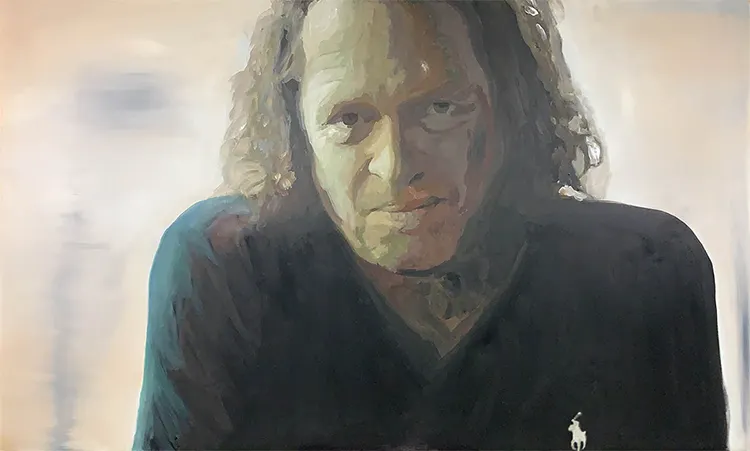
Carsten Breuer: The Fusion of Precision and Spontaneity
Breuer’s work thrives on a fascinating tension between control and chaos. While his pieces incorporate elements of traditional printmaking techniques, such as screen printing, they are simultaneously infused with the wild, spontaneous gestures of abstract expressionism. His expressive brushstrokes, deliberate drips, and gestural marks disrupt the uniformity of printed imagery, injecting a sense of movement and unpredictability into his compositions. This interplay between order and disorder not only makes his work visually dynamic but also serves as a commentary on the oversaturation of media in modern society.
Themes of fame, power, and mass production are recurrent in Breuer’s art. He often incorporates deconstructed portraits of celebrities, historical figures, and cultural icons, presenting them in surreal juxtapositions or exaggerated color schemes. Some pieces lean toward photorealism, yet even these maintain his signature neon intensity, ensuring a consistent visual language throughout his body of work. By distorting and recontextualizing familiar imagery, he challenges viewers to reconsider the narratives and meanings attached to these cultural symbols.
Despite his energetic and chaotic visual style, Breuer’s creative process is highly disciplined. He is entirely immersed in his work, unaffected by external distractions. Music serves as his only companion in the studio, providing an uninterrupted flow of inspiration. Unlike artists who require structured project plans, he embraces spontaneity, allowing ideas to develop organically. If an idea strikes, he acts on it immediately, without imposing time constraints or rigid frameworks on his creative process. This instinctive approach keeps his work fresh, unpredictable, and deeply personal.
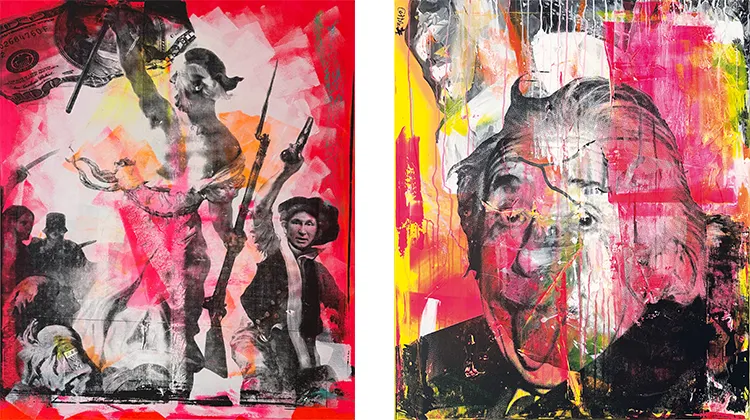
The Power of Neon and the Weight of History
Neon colors are more than just a stylistic choice for Breuer; they are an intrinsic part of his artistic identity. From the very beginning, his work has been defined by an unwavering commitment to acrylic on canvas, with a strict emphasis on neon pigments. This dedication to high-intensity hues enhances the impact of his pieces, making them impossible to ignore. The glowing vibrancy of his color choices mirrors the energy of the pop art movement while adding an unmistakably contemporary edge.
His influences stem not only from artistic movements but also from deeply personal experiences. One artwork that holds particular significance for him is Picasso’s Guernica. While he acknowledges its historical and artistic importance, he is frustrated by the way it is often reduced to mere decoration. The painting carries a painful connection to his own family history—his grandfather was among the young Nazi soldiers involved in the bombing of Guernica. This personal link to such a dark moment in history gives the artwork a weight that transcends its visual impact, making it difficult for him to understand how mass-produced reproductions of it can be treated as casual home decor. To him, Guernica belongs in a museum, where its true meaning can be properly acknowledged.
Breuer’s engagement with history extends beyond personal connections; it is also embedded in the way he reinterprets cultural imagery. By layering, distorting, and repurposing well-known visuals, he forces viewers to confront the evolving nature of collective memory. His art does not merely celebrate pop culture—it interrogates it, questioning how history, fame, and media influence perception over time. This ability to blend personal history with broader cultural critiques is what makes his work so compelling.
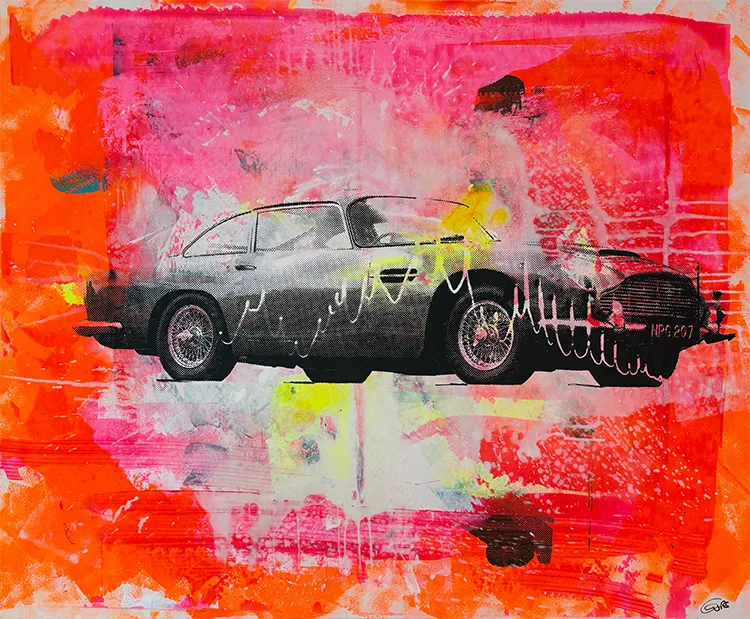
Carsten Breuer: A Free Spirit in the Art World
Breuer’s artistic philosophy is rooted in freedom—both in creativity and in process. He does not confine himself to long-term projects or premeditated concepts; instead, he follows his instincts, allowing his ideas to materialize as they come. This refusal to be bound by rigid structures ensures that his work remains fluid and ever-evolving. He does not chase trends or attempt to fit into predefined artistic categories; rather, he creates what he wants, when he wants, driven solely by the joy of artistic expression.
While his style has remained consistent in its use of neon colors and pop art influences, his techniques have evolved over time. Starting with acrylics, he has refined his process through the incorporation of screen printing, adding depth and texture to his pieces. Yet, despite his openness to experimentation, he has no interest in exploring other mediums—his focus remains firmly on perfecting his unique approach. This dedication to his craft reinforces the distinctiveness of his work, making each piece instantly recognizable.
Breuer’s art exists at the crossroads of nostalgia and modernity, rebellion and refinement, chaos and precision. By reimagining pop art through his own lens, he brings new life to familiar images, challenging audiences to see them in a different light. His fearless use of color, combined with his ability to transform cultural icons into layered, thought-provoking compositions, sets him apart in the contemporary art scene. Unapologetically bold and deeply personal, his work serves as both a celebration and a critique of the visual culture that surrounds us.




